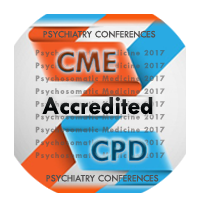Cris Coconcea
Christiana Care Health System, USA
Title: Catatonia: A “Frozen Condition?â€: Case reports, literature review, and suggested treatment algorithm
Biography
Biography: Cris Coconcea
Abstract
Background: According to recent statistics, 5–9% of all psychiatric inpatients show some catatonic symptoms. Among which 25–50% are associated with mood disorders, 10–15% are associated with schizophrenia, and the remainder are associated with other mental disorders. Recent developments in the treatment of catatonia are raising the GABAa vs. GABAb hypothesis of catatonia.
Methods: This paper describes 7 cases of benzodiazepine-resistant catatonia responding to treatment with zolpidem and critically reviews the current literature on the treatment of catatonia, proposing an algorithm for the diagnosis and treatment of this condition.
Results: All 7 patients in this report are showing similar catatonic symptoms, lack of response (or partial response) to other treatments, and same patterns of response to zolpidem, including an initial zolpidem challenge test. From the review of the literature on catatonia, there is growing evidence suggesting the role of GABAa agonists in the treatment of catatonia, as well as for the possible pro-catatonic effect of the GABAb agonists, with important potential clinical applications in the treatment of this severe condition.
Conclusions: Zolpidem, a GABAa specific agonist appears to be a new and safe therapeutic approach for catatonia, potentially useful in benzodiazepine-resistant patients. More research will be needed to replicate and further understand the mechanism and sites of its activity. Various agents described in the literature as useful for the management of catatonia are critically reviewed in terms of mechanism of activity and strength of evidence, and an evidence-based algorithmic approach to the diagnosis and treatment of catatonia is proposed.

